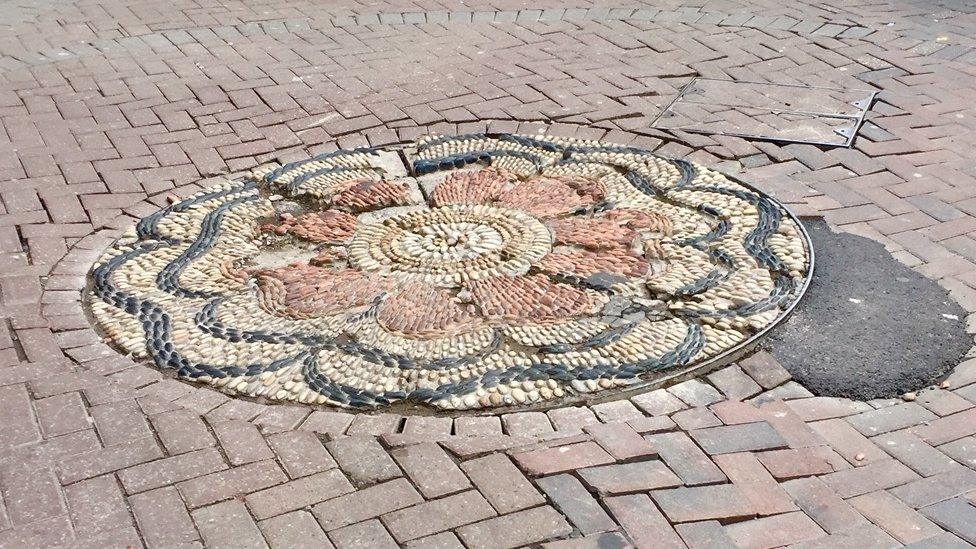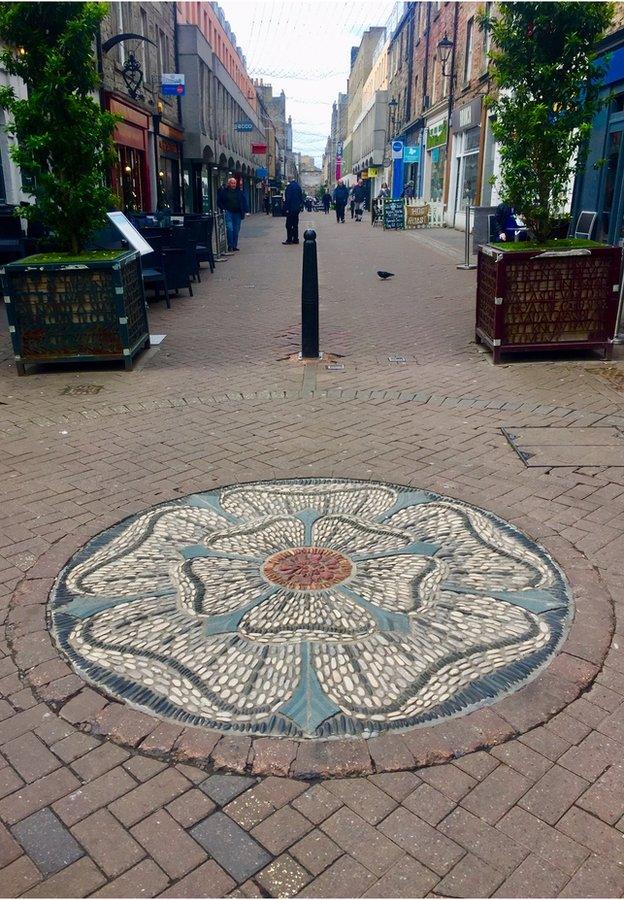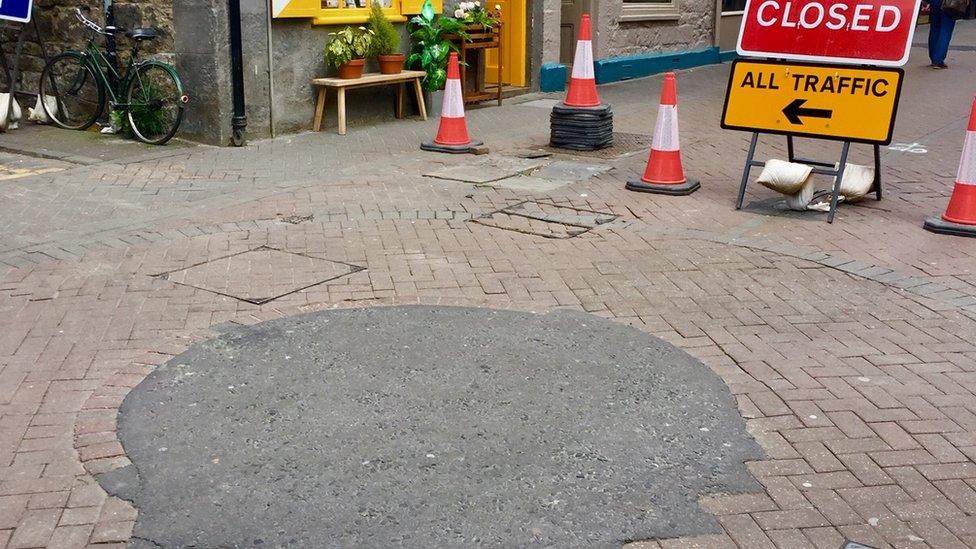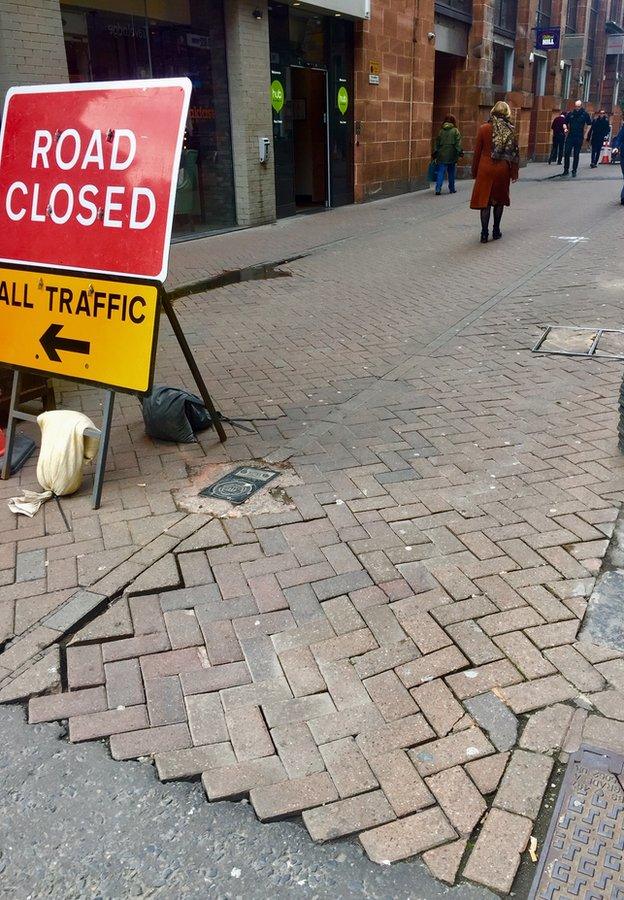Stone mosaics will not be returned to Rose Street in Edinburgh
- Published

Many of the rose mosaics in Rose Street have been damaged by lorries
Stone mosaics removed from an Edinburgh street undergoing a £1m resurfacing project will not be returned.
Eight rose motifs were installed along Rose Street, in the capital's centre, in the 1980s.
But two of the eye-catching artworks by artist Maggie Howarth were removed between 2010 and 2014.
Now Edinburgh City Council has confirmed they will not be reinstated as they are "no longer fit to withstand current use".
The street, between Hanover and Frederick Street, is pedestrianised but used by HGVs to access shops on nearby Princes Street.
Work is beginning this week on a "renewal" of the street, during which new setts will be laid in an "attractive pattern" and planters installed.

The stone mosaics were installed into Rose Street in the 1980s

A crowdfunding campaign has been launched to buy one of the mosaics which is on sale for £1,800 on a reclamation website.
It was made by the artist as a spare and is intact as it was never laid in Rose Street. It was originally sold by the council in 2017.
Community group Edinburgh Spotlight want to buy it back for local people.

Cement covers where the roses were removed
Lesley Macinnes, the council's transport and environment convener, said the mosaic has been in storage for many years.
She added: "Separate to this, the rose being sold was one of a number of mosaics created in the 1980s, which had been in storage for many years.
"As there were no plans to reuse them, this was sold in 2017. It was agreed at the time, along with partners including Edinburgh World Heritage and the artist, that the spare roses should not be reinstated in the street, as they are no longer fit to withstand current use.
"The Rose Street site requires necessary repairs to be made safe."
The resurfacing work is due to take 48 weeks and will be paused during the summer and winter festivals.
Rose Street was designed as part of James Craig's New Town plan in 1767, and in 1873 became the first pedestrian street in the city.
Rose Street was named after the English Rose and nearby Thistle Street was named after the Scottish thistle.

Lorries have damaged the setts in Rose Street
